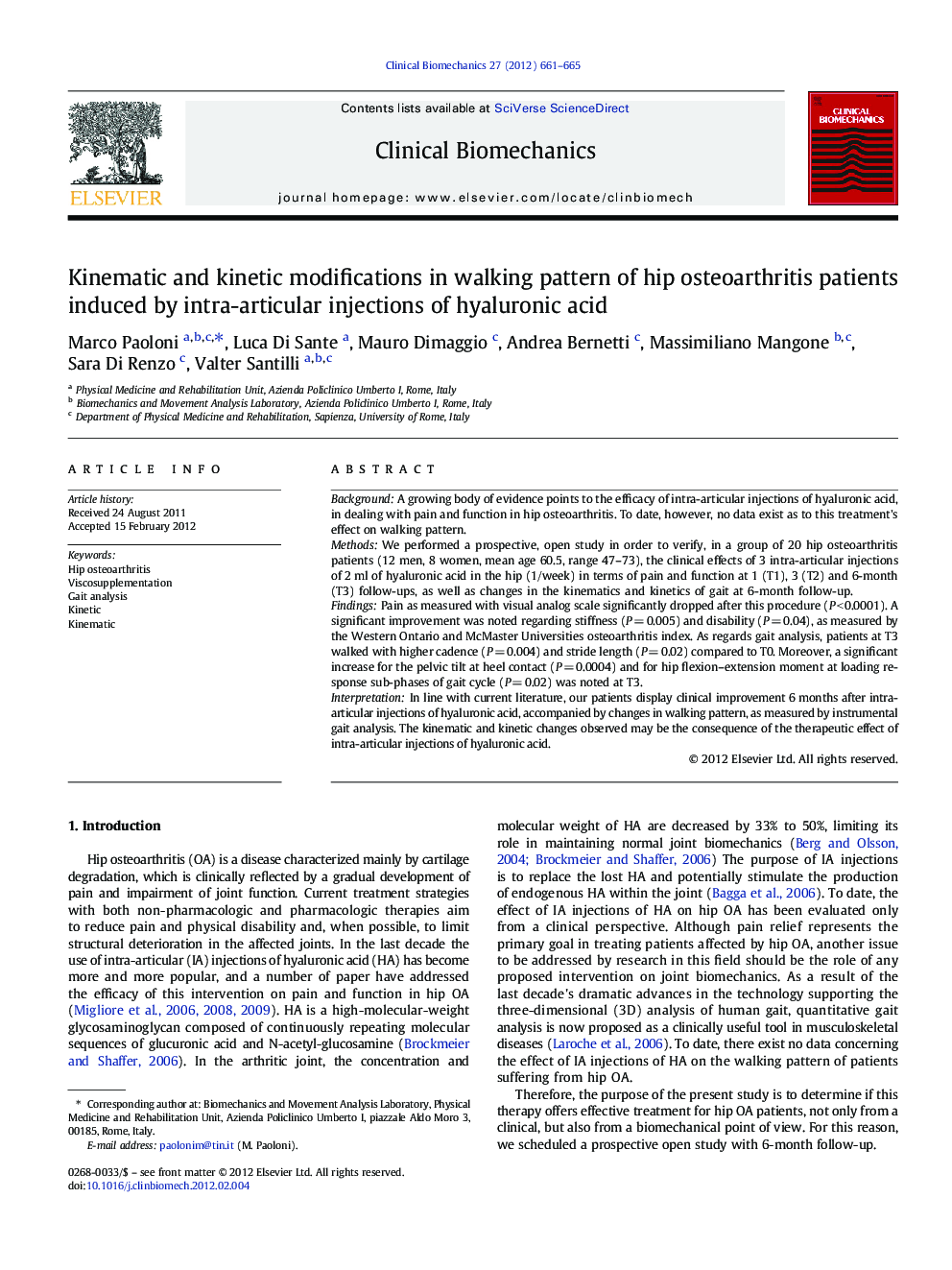| Article ID | Journal | Published Year | Pages | File Type |
|---|---|---|---|---|
| 4050779 | Clinical Biomechanics | 2012 | 5 Pages |
BackgroundA growing body of evidence points to the efficacy of intra-articular injections of hyaluronic acid, in dealing with pain and function in hip osteoarthritis. To date, however, no data exist as to this treatment's effect on walking pattern.MethodsWe performed a prospective, open study in order to verify, in a group of 20 hip osteoarthritis patients (12 men, 8 women, mean age 60.5, range 47–73), the clinical effects of 3 intra-articular injections of 2 ml of hyaluronic acid in the hip (1/week) in terms of pain and function at 1 (T1), 3 (T2) and 6-month (T3) follow-ups, as well as changes in the kinematics and kinetics of gait at 6-month follow-up.FindingsPain as measured with visual analog scale significantly dropped after this procedure (P < 0.0001). A significant improvement was noted regarding stiffness (P = 0.005) and disability (P = 0.04), as measured by the Western Ontario and McMaster Universities osteoarthritis index. As regards gait analysis, patients at T3 walked with higher cadence (P = 0.004) and stride length (P = 0.02) compared to T0. Moreover, a significant increase for the pelvic tilt at heel contact (P = 0.0004) and for hip flexion–extension moment at loading response sub-phases of gait cycle (P = 0.02) was noted at T3.InterpretationIn line with current literature, our patients display clinical improvement 6 months after intra-articular injections of hyaluronic acid, accompanied by changes in walking pattern, as measured by instrumental gait analysis. The kinematic and kinetic changes observed may be the consequence of the therapeutic effect of intra-articular injections of hyaluronic acid.
